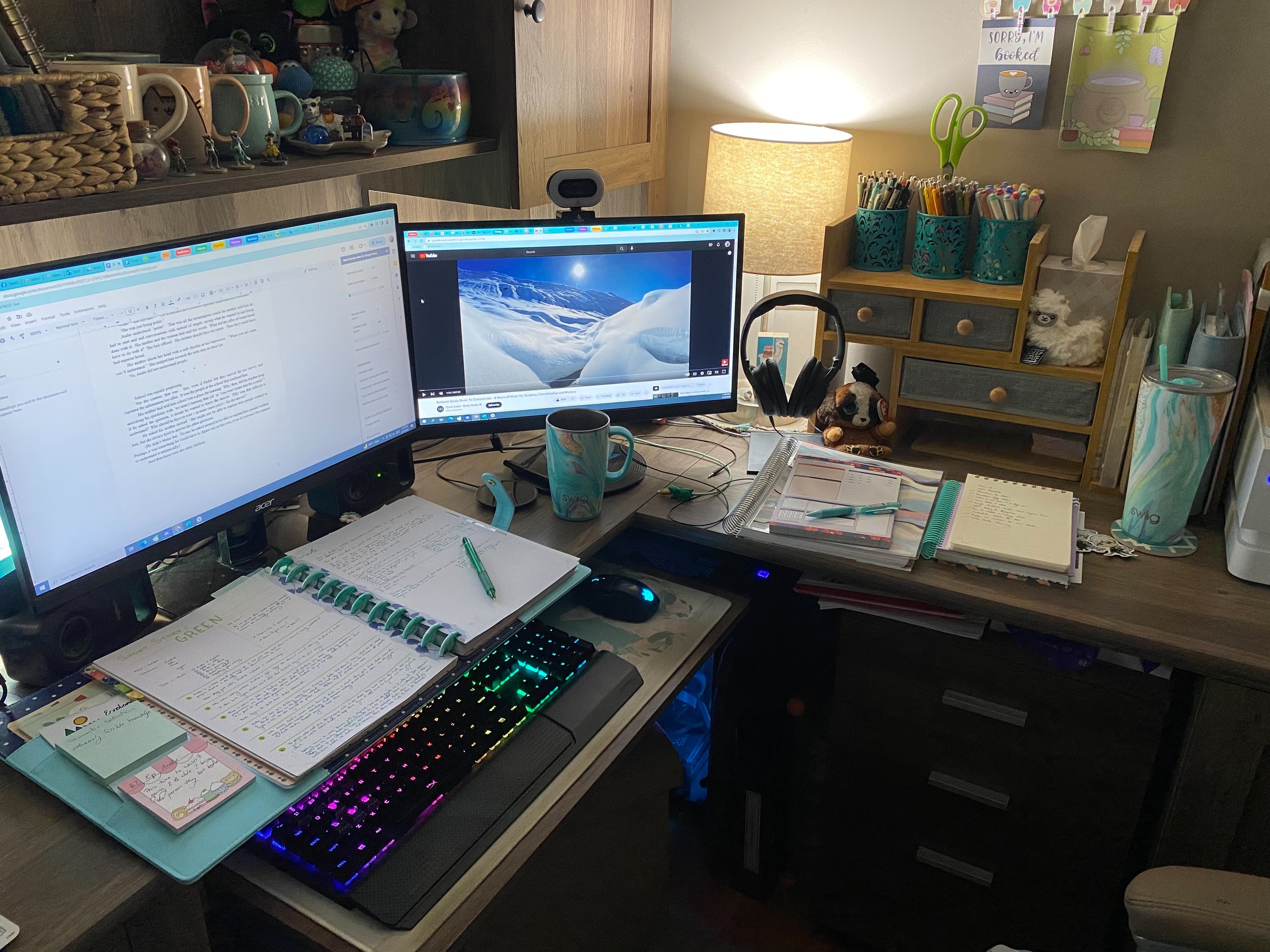My Writing Process
Every writer has a different method.
There is no one, true way. It would possibly be easier if there were, but there isn’t, so everyone has to figure out what works best for them. This is something that can take a long, long time for some people — I very much doubt I’ve figured out the perfect way that works for me! But this is how it works for now.
How do I get ideas?
This is probably one of the more popular questions I get asked — where do my ideas come from?
But really, where do any ideas come from? Who knows. Life creates ideas. Situations create ideas. Often they just pop into our heads like little visiting gremlins who take their ideas with them if we forget to write them down (unless you are one of the really, really lucky people who remember everything you think of). They like to visit me when I’m trying to fall asleep; I keep a notepad and pen on my nightstand for that exact reason.
Sometimes ideas come from other media — books, tv shows, video games, etc. It can be fun to play around with an idea and see how it can be twisted to go a different way, or see how a particular archetype might act in a different situation. Or even just if you’ve really been enjoying something, and then suddenly it takes a turn you don’t like!
Finally, I get a lot of ideas just from talking to people. Sometimes, this is on purpose — we are already discussing a story, and someone says something that makes the other go, “Oh, it would be cool if—!” or something similar. And sometimes, people just say things that spark ideas.
Pantser vs. Plotter
Or, as George R. R. Martin calls them, “gardener vs. architect,” but what am I even talking about?
Really, this is a conversation of how much planning happens in advance of the actual writing. Plotters (or architects) plan and outline, create detailed character bios and take copious notes. Pantsers (coming from going “by the seat of their pants,” also the gardeners in Martin’s comparison), just sit down with a vague idea and write whatever comes to them. Now, plotters can still change things as they go, and pantsers might have a specific idea or two they want to include, so it’s more like a sliding scale than two distinct columns.
It is important to note that neither of these is the “wrong” method. There have been successfully published plotters and successfully published pantsers. It’s about what works best for the writer in question. Pantsers like the flexibility of their method; plotters like knowing where they are going.
So, where am I?
Well, somewhere in the middle, I’d say. I definitely use methods from both camps. When I sit down to write a book, I usually know the “beats” of the story — the major plot points, sometimes some specific scenes. With this series, there was a lot of worldbuilding and maps done ahead of time as well. But I don’t like to plan for every little thing that is going to happen. I prefer to explore a bit as I go from beat to beat, and let my characters tell me how the story is going to go.
I did outline a little more heavily for book 3 than for the first two, but that was because I wanted the extra help with staying on track of where I needed to get to. I still did not outline each individual chapter. Instead, I used index cards for the beats I wanted to hit and some scenes, color-coded by point-of-view. Then I was ready to go!
Actually Writing
Okay then. How does the actual writing part go?
This is also something that varies massively from author to author. I prefer to write very late at night, after midnight (I am more productive at this hour for some reason), at my desk. Often I’ll put some ambient music or sounds on. Sometimes I write a scene list, sometimes I just go in and write! It depends on how well I have the chapter pictured in my head. Sometimes I even just write dialogue, then go back and add what is happening during it.
I always track my word count, and I usually write in “sprints,” meaning I set a timer and write until it goes off, then take a short break. There are all different lengths for sprints but I prefer twenty five minutes of writing followed by a five-minute break. And keeping track of my word count helps motivate me to keep going. Sometimes I have a word count goal for the day (usually, on a day I expect to spend doing what I consider an “average” amount of writing, it’s 2000 words), but sometimes I set a sprint goal instead (“It’s just two sprints, Liz, you can do that!”).
If I feel like I’m getting stuck, I’ll sometimes take a longer break and pace around my house while I work it out. This is surprisingly effective for me; I put a notebook on a table I walk past and write down any ideas I have quickly (those little gremlins pack up and leave quick, I’ve found).
And that’s how I write! Everyone’s different though, and I’ve known a number of other writers who wrote in very different ways. There’s no one way! So if you are trying to get into writing and are looking for the process that works best for you, my advice is to experiment. Who knows? Maybe you’ll surprise yourself.
Cheers :)

